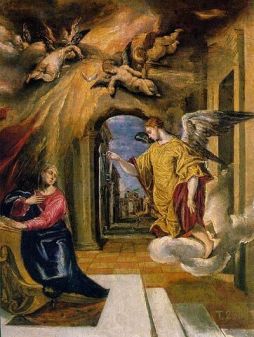
The Annunciation occupies a deep place in Christian theology and marks the second when the angel Gabriel visited the Virgin Mary with a message of immense significance: the conception of Jesus, the Son of God. This sacred occasion, noticed on March 25, is of basic theological and religious significance within the Christian calendar and marks the start of the Incarnation—the assumption that God grew to become man within the particular person of Jesus Christ.
Within the Gospel of Luke, chapter 1, verses 26-38, the narrative of the Annunciation unfolds:
“Within the sixth month of Elizabeth's being pregnant, God despatched the angel Gabriel to Nazareth, a metropolis in Galilee, to a virgin promised to marry a person named Joseph, a descendant of David. The virgin's identify was Mary. The angel went to and mentioned: 'Greetings, you , who’ve nice favor! The Lord is with you.'”
These phrases of the angel Gabriel to Mary point out the divine favor bestowed on her and the extraordinary function she is going to play in God's plan for humanity. Mary's first response displays her humility and willingness to serve: “I’m the servant of the Lord,” answered Mary.
Annunciation means the second when the Phrase grew to become flesh, as described in John 1:14: “The Phrase grew to become flesh and dwelt amongst us. We noticed his glory, the glory of the one begotten Son, who got here from the Father, stuffed with grace and reality.”
Mary's acceptance of Gabriel's message exemplifies her steadfast religion and obedience to God's will, regardless of the potential challenges and uncertainties she confronted. Her pivotal function because the mom of Jesus emphasizes the profound partnership between humanity and divinity within the unfolding of God's plan of redemption.
The importance of the Annunciation transcends its historic context and resonates all through Christian theology and spirituality. It symbolizes the hope for the salvation of mankind as God enters into human historical past to reconcile mankind to himself.
The early church fathers usually referred to Mary because the “New Eve”, drawing parallels between her obedience and the disobedience of Eve, whose actions within the Backyard of Eden led to the autumn of mankind. Mary's fiat, or “let or not it’s,” stands in stark distinction to Eve's disobedience and underscores her pivotal function within the upheaval of humanity's religious situation.
All through Christian historical past, the Annunciation has been celebrated by means of liturgical feasts, inventive representations, and devotional practices. In Christian artwork, the Annunciation is depicted with symbols such because the angel Gabriel, the Virgin Mary, and the Holy Spirit represented as a dove, encapsulating the thriller and fantastic thing about this divine encounter.
As Christians replicate on the Annunciation, they’re invited to ponder the vastness of God's love and mercy manifested within the particular person of Jesus Christ. It serves as a reminder of God's faithfulness to His guarantees and His invitation to mankind to take part in His redemptive work. Because of this, there’s a second of deep that means the place the divine intersects with the mortal realm.
For believers, the Annunciation is the cornerstone of the Christian religion and represents the convergence of God's grace and human obedience. By way of Mary's “sure” to God's plan, humanity receives the reward of salvation and the hope of everlasting life.
When Christians commemorate the Annunciation on March 25, they’re referred to as to mimic Mary's religion and belief in God's windfall and to simply accept His will with humility and pleasure.
